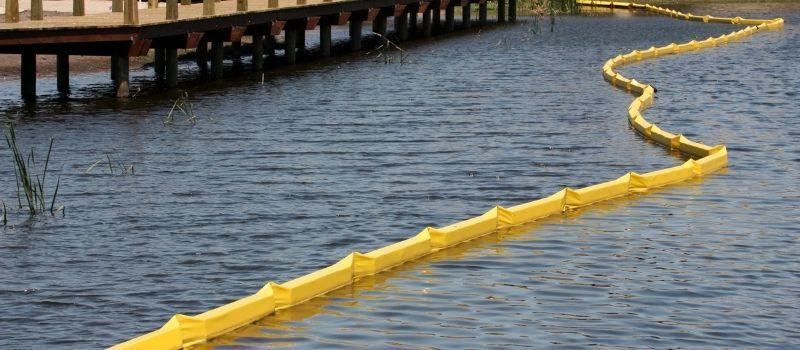Spill containment kits may not be used that often by your business, but they can be a crucial part of your disaster recovery kit. Containing a spill can save you lots of money so it is important that you make sure you have the right kit and that it is in good working order.
Why is it important to have a spill containment kit?
Having a spill containment is vital for dealing with emergency situations as quickly and safely as possible.
Spill kits are fast and simple to use in a leak emergency. When the time comes to use your spill kit you can easily deploy the kit to contain a leak. This will help reduce the damage caused to both the surrounding area and any equipment.
What do you need in your spill containment kit?
A spill kit can differ depending on your needs but there are a few standard items that you’ll need to build your spill kit:
- Absorbent socks – designed to go around machinery or tanks to prevent leaks spreading across the floor
- Absorbent pillows – will absorb a pool of fluid and retain the liquid
- Absorbent pads – many uses such as drip pad, absorb water or to create a walkway
- Personal protective equipment – protective equipment that may be needed if deep flood or liquids may be harmful
These are just the basic items you will need for your spill kit. There are many other things you can add to your spill kit, and these can be found on our website.
How to maintain your spill containment kit
You need to perform regular checks on the full kit to ensure that your spill containment kit is maintained and safe to use when needed. Doing this can be the difference between a well-managed leak and a poorly handled leak.
The best practice is to check your spill kit once every three months. If you will be using your spill kit in a high-risk environment such as mines or power plants, then we would advise to check the spill kit much more frequently.
Other things you can monitor in your spill kits is signs of wear and tear, regularly run tests to ensure it is still working and keep an eye on any use by dates.
Best type of spill containment kit
There isn’t any one spill containment kit that is better than another, it comes down to which one is best for your needs. There is lots of variety out there, knowing which suits your needs is the best way to decide which to buy.
The two main types of spill trays or pallets you will find are polyethylene spill containers and steel spill containers.
Polyethylene is often used when:
- Corrosive or reactive chemicals are stored
- Temperature extremes are not a concern
- Corrosion of steel in high humidity, corrosive environments is a factor
- Dedicated bonding/grounding points are not required
- Cost-saving is a requirement
Steel is often used when:
- Dedicated bonding/grounding points are required
- Solvents, fuels, and polyethylene-degrading liquids are stored
- Temperature extremes are involved
- High humidity/corrosive environments are not a factor
Our helpful customer service team are always available if you have any questions you need answering about spill containment kits.
When is it time for a new spill containment kit?
Most items in a spill kit don’t have actual expiry dates, but the absorbents used do. Usually this is around five years, but this is all dependent on usage and storage. If you look back at the how to maintain your spill equipment section, you will see the importance of regular checks is stressed there. The more you check and maintain your kit, the more likely it is to last a minimum of five years.
The key thing to remember in relation to your spill kit is that even though you may only need it once in an emergency, it is better to check your spill kit regularly so when that time comes you are able to safely handle the leak.
If you’d like to find out more about the car spill containment kits we have available, please contact our sales team on 01777 858009 or email sales@kingfisherdirect.co.uk.

